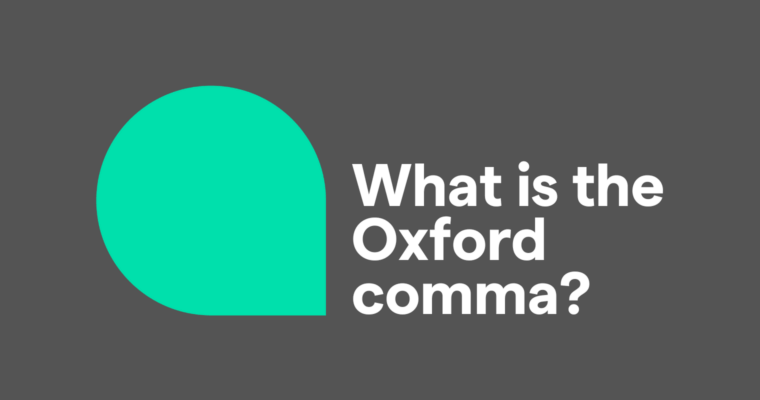
The Oxford (or serial) comma is the final comma in a list of things.
The Oxford comma is the one right after pen.
The use of the Oxford comma is a matter of style, meaning that some publishing styles stipulate its use while others don’t. It’s not grammatically incorrect to use the Oxford comma or to skip it, but you should be consistent one way or the other. It’s worth noting, however, that the Oxford comma can sometimes help avoid confusion in lists of three or more items.
Here, we’ll cover the basics of when to use an Oxford comma, the style guides that recommend it, and examples of how to use it correctly.
Table of Contents
The Oxford comma (or serial comma) explained
When to use an Oxford comma to avoid confusion
The Oxford comma (or serial comma) explained
The comma before and at the end of a list of three or more items is called the Oxford comma or serial comma. As you’ve probably noticed, many people have strong feelings about this topic. We’ll get to that shortly.
Let’s say your best friend Brian has so many great qualities that you just have to tell the world about them. When you list Brian’s best qualities, you must use a comma after each quality you list except the one that comes immediately before and. That comma is optional.
The sentence above is grammatically correct with or without the comma before and. Although the Oxford comma is optional, you should be consistent. Don’t switch back and forth in the same document between using the Oxford comma and not using it.
Outside of personal preference, whether or not you should use the Oxford comma depends heavily on which style guide you’re using.
Who uses the Oxford comma?
Most major style guides, especially those in the academic world, recommend using the Oxford comma. On the other hand, journalistic style guides tend only to use it when it provides extra clarity to a list.
No discussion of competing style guides would be complete without considering the Oxford (or serial) comma debate. Exactly why this quirk of comma usage stirs such passion is hard to say, but this may have something to do with it:
- The Associated Press (AP) Stylebook doesn’t ban the Oxford comma but recommends using it only when necessary for clarity.
- The Chicago Manual of Style and Modern Language Association (MLA) are strong proponents of the Oxford comma and recommend using it in almost all instances.
- The American Medical Association (AMA) and American Psychological Association (APA) use it, whereas the Cambridge University Press doesn’t.
- Using the Oxford comma is more common in US English than UK English.
Let’s go back to our very first Oxford comma example:
The above example in AP style would look like this:
It’s hard to imagine anyone misreading the version without the comma before and, and cases like this help explain why the Oxford comma is often considered optional. However, there are times when that comma does make a difference. Unless you’re writing a news article, a school essay, or working for an organization that requires the Oxford comma, including it in your writing is usually a personal choice.
Oxford comma examples
Here are some more examples of using the Oxford comma in a sentence:
When to use an Oxford comma to avoid confusion
Omitting the Oxford comma can sometimes cause confusion or strange misunderstandings. As we said above, style guides that don’t generally use the Oxford comma (like AP) allow you to use it to provide clarity when necessary. Even if you’re following a professional or personal style that doesn’t use the Oxford comma, it’s always permissible to use one to help avoid confusion.
Here’s an example:
Without the Oxford comma, the sentence above could be interpreted as saying you love your parents and that your parents are your dog and your cat. Here’s the same sentence with the Oxford comma:
Those who oppose the Oxford comma may argue that rephrasing an already unclear sentence can solve the same problems that adding an Oxford comma would. For example, the sentence above could be rewritten as:
Oxford comma FAQs
Where does the Oxford comma go?
The Oxford comma goes before and at the end of a list of three or more items. Here’s an example: For breakfast, I had eggs, toast, and orange juice. In this sentence, the Oxford comma is the comma right after toast.
Is using the Oxford comma correct?
Because the Oxford comma is optional, using it and not using it are both grammatically correct. However, it is advisable to be consistent one way or the other.
Should I use the Oxford comma?
Using the Oxford comma is a matter of style, meaning that some style guides stipulate its use while others don’t. Unless your school, employer, or organization specifically demands Oxford comma usage, whether you include it in your writing is generally up to you.






